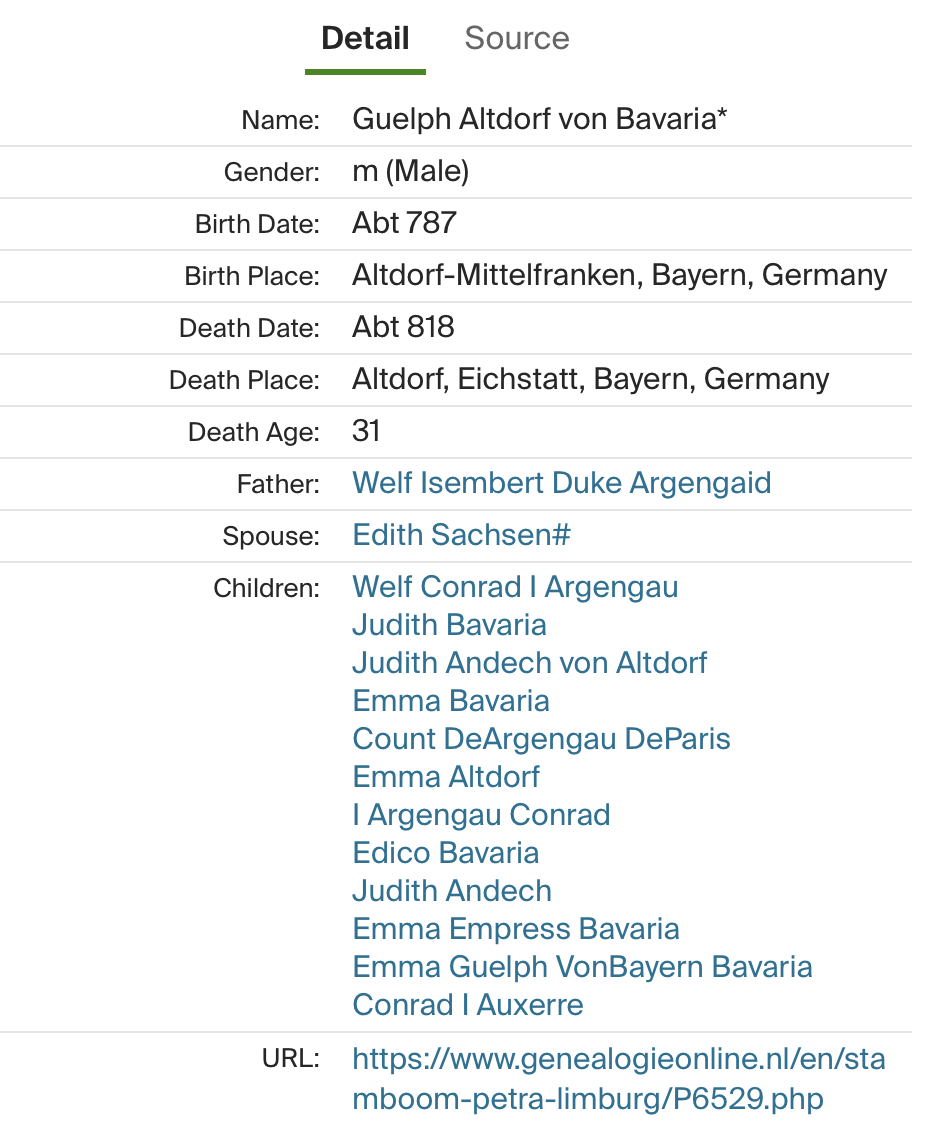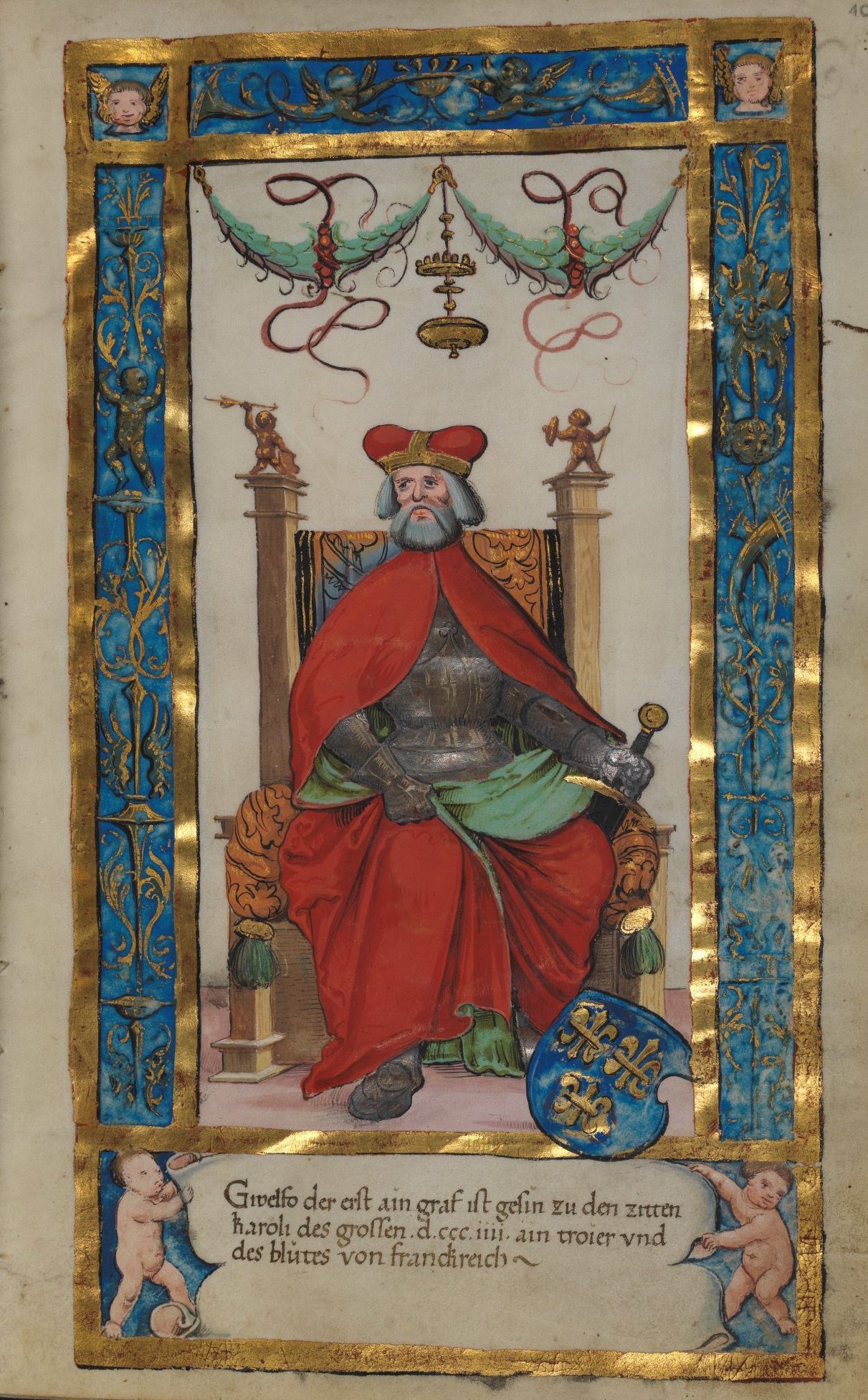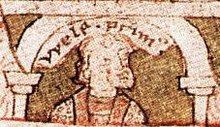Death:
Count of Altdorf, Count in Swabia, Duke of Bavaria, Count in Alemannia, Duke of Auxerre
Welf I or Welfo (died before 876) was a Swabian nobleman. He was a member of the Elder House of Welf.
Welf originated from a distinguished dynasty of Franconian nobles. He is mentioned only once: on the occasion of the wedding of his daughter Judith with Emperor Louis the Pious in 819 at Aachen. His son Conrad later appeared as a dux (duke) in Alamannia and achieved a powerful position in the Upper Swabian estates he possibly had inherited from his mother Hedwig (Heilwig).
His family became politically powerful when Louis the Pious chose his oldest daughter as his 2nd wife upon the death of his consort Ermengarde of Hesbaye. Though Welf himself never became publicly prominent, his family became interwoven with the Carolingian dynasty.
Welf was probably a son of Conrad I of Auxerre, and seems to have taken over his father's offices in Swabia, namely: count of Alpgau, count of Linzgau, and possibly count of Argengau. However, when Conrad and his other sons changed allegiance from King Louis the German to King Charles the Bald in 859, Welf disappears from the historical record. It is assumed that he fell out of favor with King Louis and lost his offices; the Swabian branch of the Elder Welfs was not mentioned again until Rudolf II, Count of Altdorf, who died around 990 and was — according to legend — a descendant of Welf.
Death:
Count of Altdorf, Count in Swabia, Duke of Bavaria, Count in Alemannia, Duke of Auxerre
Welf I or Welfo (died before 876) was a Swabian nobleman. He was a member of the Elder House of Welf.
Welf originated from a distinguished dynasty of Franconian nobles. He is mentioned only once: on the occasion of the wedding of his daughter Judith with Emperor Louis the Pious in 819 at Aachen. His son Conrad later appeared as a dux (duke) in Alamannia and achieved a powerful position in the Upper Swabian estates he possibly had inherited from his mother Hedwig (Heilwig).
His family became politically powerful when Louis the Pious chose his oldest daughter as his 2nd wife upon the death of his consort Ermengarde of Hesbaye. Though Welf himself never became publicly prominent, his family became interwoven with the Carolingian dynasty.
Welf was probably a son of Conrad I of Auxerre, and seems to have taken over his father's offices in Swabia, namely: count of Alpgau, count of Linzgau, and possibly count of Argengau. However, when Conrad and his other sons changed allegiance from King Louis the German to King Charles the Bald in 859, Welf disappears from the historical record. It is assumed that he fell out of favor with King Louis and lost his offices; the Swabian branch of the Elder Welfs was not mentioned again until Rudolf II, Count of Altdorf, who died around 990 and was — according to legend — a descendant of Welf.











